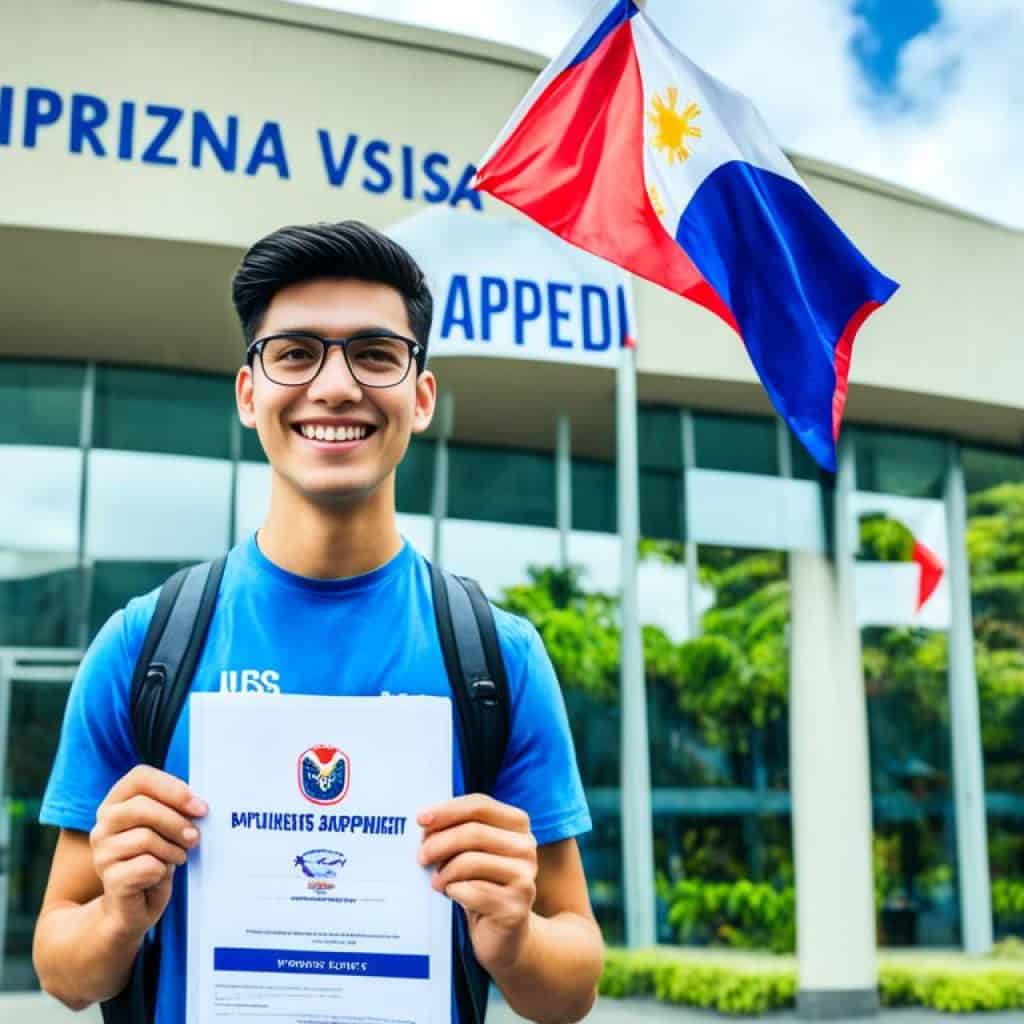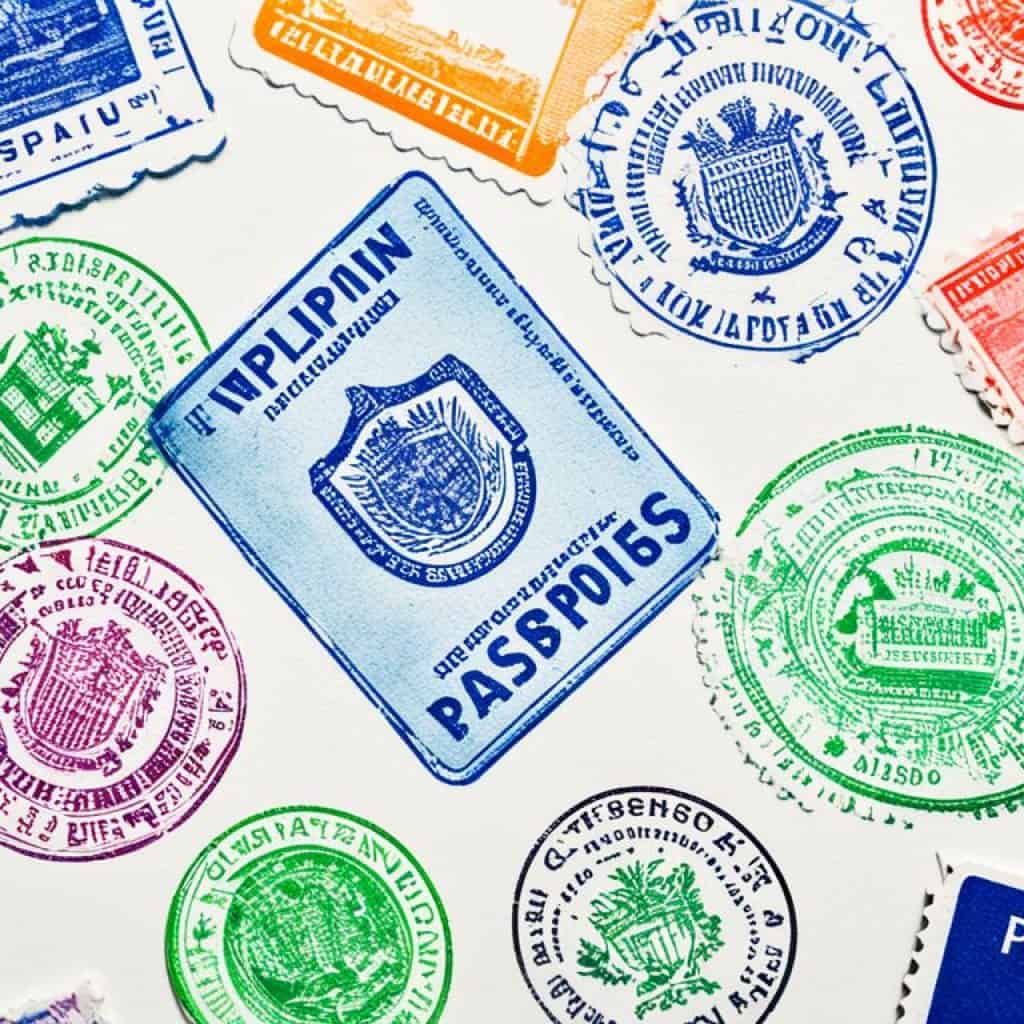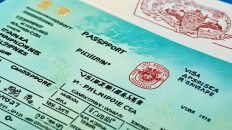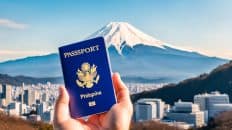Planning a trip to the Philippines? Or want to study there for a while? Before you pack your bags, it’s important to know about the visa rules. The Philippines offers various visas. Each has rules and limits you should know about.
So, what visa do you need? Maybe you’re thinking of a tourist visa. But there could be better choices for your needs. We’ll take a close look at the options, how to get them, and their requirements.
Are you traveling, studying, or doing business in the Philippines? Understanding the visa choices will help you plan your trip. Let’s discover how to navigate the visa types in the Philippines successfully!
Key Takeaways:
- There are different types of visas available in the Philippines, including tourist visas, student visas, and business visas.
- Each type of visa has specific requirements and restrictions that applicants must fulfill.
- It is crucial to familiarize yourself with the visa application process and documentation required for each visa type.
- Consulting with the nearest Philippines embassy or consulate is recommended to ensure accurate and up-to-date information.
- Understanding the visa options in the Philippines can make your travel, study, or business plans a reality.
Types of Non-Immigrant Visas in the Philippines
Planning to visit the Philippines? It’s key to know the types of non-immigrant visas. These visas are for those wanting to stay temporarily. They’re not for those wanting to live or work there. Let’s look at the common types:
Temporary Visitor’s Visa (Tourist Visa)
Looking to tour the Philippines? The temporary visitor’s visa is perfect. It’s for tourism, leisure, medical, or business visits. You can stay up to 59 days, and extend for another 30. You’ll need a valid passport, filled-out application, proof of funds, travel plans, and return flight tickets to apply.
Business Visa
The Philippines welcomes business travelers with the business visa. Great for conferences, meetings, or trade. This visa lets you stay up to 90 days. Requirements include a passport, visa form, business papers, financial proof, and an itinerary.
Student Visa
Over 18 and want to study in the Philippines? You’ll need a student visa. Bring a passport, visa form, acceptance letter, financial proof, and other documents. The visa lasts as long as your program.
The Philippines offers several visa types. Each with its own requirements and limits. Understanding them is crucial before applying. Next, we’ll dive deeper into the tourist visa.
Temporary Visitor’s Visa (Tourist Visa)
Are you planning a trip to the Philippines for fun, health, or work? You’ll need a temporary visitor’s visa, or tourist visa. This visa lets you stay in the Philippines for up to 59 days. You can also ask for 30 more days.
To apply for a tourist visa, you need some key documents. Here’s a quick list:
- Valid passport: Your passport should be valid for six more months after you arrive in the Philippines.
- Completed visa application form: Make sure all your info is correct and easy to read.
- Proof of financial capacity: Show you have enough money for your stay in the Philippines.
- Itinerary: Explain your travel plans and what you’ll do in the Philippines.
- Return flight tickets: Show your booked tickets back home to prove you will leave after your visit.
Take these documents to the nearest Philippines embassy or consulate to apply. Check with the embassy first, as different countries may have different rules.
After collecting all your documents, fill out the visa application form carefully. Submit it with the other needed documents. Follow any extra steps the embassy or consulate tells you about.
The temporary visitor’s visa is your ticket to the Philippines’ beauty and warmth. It’s perfect for touring its breathtaking islands, experiencing its rich culture, getting medical treatments, or doing business.
Business Visa
Planning to do business, go to conferences, or have meetings in the Philippines? You’ll need a business visa. This is for people visiting for business reasons.
This visa lasts up to 90 days. That’s enough time for your business needs. To apply, you’ll have to give:
- A valid passport with at least six months left
- A filled-out visa form from the Philippine embassy or consulate
- Business papers like invitation letters, conference registrations, or schedules to show why you’re visiting
- Evidence you can afford your stay
- An itinerary of your planned activities and where you’ll stay
The visa requirements might change based on where you’re from. It’s smart to check with the Philippine embassy or consulate for the latest.
Getting a business visa is simple if you follow the steps and get the right documents ready. With your visa, you can do your business and see what the Philippines offers.
Student Visa
Are you planning to study in the Philippines and you’re 18 or older? You will need a student visa for a smooth study experience. This visa lets you enroll in a recognized school and stay for your course duration.
To get a student visa, you’ll need these documents:
- A valid passport
- A completed visa application form
- An acceptance letter from a recognized educational institution in the Philippines
- Proof of financial capacity for your tuition and living expenses
- Other supporting documents as required
Gather all your documents and submit them to the nearest Philippines embassy or consulate. Since processing times can vary, it’s wise to apply early before your course starts.
Studying in the Philippines is a great chance to dive into a diverse culture while getting a quality education. The country offers various academic options, from top universities to specialized schools.
Benefits of Studying in the Philippines
Studying in the Philippines has many benefits:
- Access to top-notch education with globally recognized programs
- Lower tuition and living costs than in other countries
- A multicultural learning setting
- Chances for growth personally and professionally
- Exposure to the Philippines’ rich culture and beautiful nature
By choosing the Philippines, you’ll learn a lot and make memories and friends for life.
“Studying abroad in the Philippines has been an incredibly rewarding experience. The country’s vibrant culture, warm hospitality, and excellent academic institutions have transformed my educational journey into something truly remarkable.”
– Emma Thompson, International Student

Starting your studies in the Philippines is an exciting step. Make sure to check the visa requirements and guidelines from the Philippines embassy or consulate for a smooth application.
Transit Visa
Are you planning a trip with a layover in the Philippines? If you’re just passing through on your way somewhere else, a transit visa might be needed. This lets you stay up to 72 hours, but only inside the airport.
Getting a transit visa is pretty simple. You will need:
- A valid passport.
- Your flight details showing when you’ll leave the Philippines.
- Proof you’re traveling on to another place.
- Any other papers the embassy or consulate asks for.
If you have a ticket to continue your journey within 72 hours, you can get this visa. Remember, you can’t leave the airport with it. If you want to go out or stay longer, you need another visa type.
To learn more or apply for a transit visa, reach out to the nearest Philippines embassy or consulate.
Seamen Visa
The seamen visa in the Philippines is for foreign crew needing to land briefly. They might need to rest, have fun, or get medical help. This visa helps seafarers move smoothly while in the Philippines.
To apply for a seamen visa, you must provide certain papers. These include proof of working on a ship and plans to leave with it. The Philippine embassy or consulate needs these and other documents.
“The seamen visa is key for seafarers’ entry and stay in the Philippines. It lets them safely disembark and manage personal stuff while following immigration rules.”
Requirements for Seamen Visa
To get a seamen visa in the Philippines, you must:
- Prove you work on a vessel
- Show you will leave with the ship
- Have a valid passport with at least six months left
- Fill out a visa application form
- Provide other necessary documents as the embassy or consulate decides
Always check with the nearest Philippine embassy or consulate. They’ll have the latest on what you need to apply for a seamen visa.
Treaty Traders/Treaty Investor Visa
The treaty traders/treaty investor visa is a unique visa type in the Philippines. It’s for foreign nationals from countries like the United States, Japan, and Germany. These nationals can trade or invest under existing treaties. This visa aims to foster trade and investment between the Philippines and these countries.
To get this visa, applicants must meet certain requirements set by the Philippine government. They need to show proof of business ownership or investment, provide financial statements, and other documents. This shows their plan to trade or invest in the Philippines.
Requirements for Treaty Traders Visa:
- Evidence of business ownership or investment
- Financial statements
- Valid passport
- Completed visa application form
- Other supporting documents
Requirements for Treaty Investor Visa:
- Evidence of business ownership or investment
- Financial statements
- Valid passport
- Completed visa application form
- Other supporting documents
This visa has specific eligibility rules and limits. The Philippines checks this visa type carefully. It ensures only eligible people can trade or invest under these treaties.
If you’re looking to get a treaty traders/treaty investor visa in the Philippines, best contact the closest Philippine embassy or consulate. They’ll give you the most recent info on the process, needed documents, and who can apply.
Foreign Government Official Visa
The Philippines offers a visa for foreign government officials and their teams. This visa is for official business only. It needs proof of position, a valid passport, and a travel plan.
If you’re a foreign official, getting the right visa makes your Philippine trip smooth. This visa lets you do your official work in the country.
To apply, you must provide lots of documents. These include:
- Official letter of request from your government
- Accreditation from the Philippine Department of Foreign Affairs or a diplomatic note
- Valid passport with six months left
- Proof of your business reason for travelling
- Detailed travel plan
- Intro letter from your government
- Proof you can afford the trip
- Filled-out visa application form
| Foreign Official Visa Requirements | Application Process |
|---|---|
| Official letter of request from the sending foreign government | Complete the visa application form |
| Accreditation from the Philippine Department of Foreign Affairs or a diplomatic note from the foreign embassy or consulate | Submit the application and supporting documents to the nearest Philippines embassy or consulate |
| Valid passport with at least six months validity | Pay the required visa fee |
| Proof of purpose of travel (official business) | Wait for the visa processing, which can take several weeks |
| Detailed travel itinerary | Collect your passport with the approved visa |
| Letter of introduction from the sending foreign government | |
| Proof of financial capacity |
Remember, this visa comes with rules. These may include stay limits and allowed activities. Check with a Philippines embassy for the latest info.
Getting this visa helps foreign officials and their teams do their jobs in the Philippines. It allows for a smooth, legal entry and a productive visit.
Immigrant Visas in the Philippines
Immigrant visas in the Philippines let people set up a new home in the country. You can be coming back as a former Filipino or joining your family. There are different types of visas depending on your situation.
The family reunion visa is a popular choice. It lets you live in the Philippines with your Filipino family. You need to meet some requirements and provide the right papers to apply.
There’s also a visa for former natural-born Filipinos who are now citizens of other countries. It lets them come back and live in the Philippines as citizens again. This visa has its own set of rules to follow.
If you want to apply for any immigrant visa, you need to know the rules and what you need to do. It’s a good idea to talk to the Philippines embassy or consulate. They can give you the latest info and help you out.
Benefits of Immigrant Visas in the Philippines
Getting an immigrant visa in the Philippines is great. You can live and work there for good. You’ll have benefits like healthcare, education, and job opportunities.
With this visa, you can also bring your family to live with you. It makes it easier for families to be together and have a stable life.
Having this visa lets you be a part of the Filipino community. You can join in on social, cultural, and economic activities. It’s a chance to help the country grow.
| Immigrant Visa Category | Requirements |
|---|---|
| Family Reunion Visa | – Valid passport – Completed visa application form – Proof of Filipino citizen family member – Proof of relationship with the family member – Other supporting documents as required |
| Returning Former Natural-Born Filipino Visa | – Valid passport – Completed visa application form – Proof of previous Filipino citizenship – Proof of naturalization as citizen of another country – Other supporting documents as required |
Each visa category has its own rules. Make sure you understand what’s needed. Check the guidelines from the Philippines embassy or consulate. Have all your documents ready. This will help make the application process smooth and may increase your chances of success.
Visa Application Process and Requirements
Applying for a visa to the Philippines involves gathering necessary documents. You must submit these to the nearest Philippines embassy or consulate. It’s crucial to follow the requirements and guidelines provided by the Philippine government. This will help you understand the visa application process and what you need to prepare:
Step 1: Complete the Visa Application Form
Start by filling out the official visa application form. You can download this form from the nearest Philippines embassy or consulate’s website. Make sure to accurately complete all required sections and provide the needed information.
Step 2: Gather the Supporting Documents
You’ll need to bring several documents to support your visa application. These documents may include:
- A valid passport: Your passport should be valid for at least six months after entering the Philippines. It should also have at least two blank pages for visa stamps.
- Proof of financial capacity: This might be bank statements, income tax returns, or sponsor letters, based on your visa type.
- Travel itinerary: You should have a complete travel plan. This includes where you’ll stay, what activities you’ll do, and how long you’ll stay.
- Return flight tickets: Show confirmed tickets to prove that you plan to leave the Philippines after your visit.
- Additional documents: Some visas might require special documents. For example, student visas need an acceptance letter from a school. Business visas might need extra business-related documents.
Step 3: Submit the Application
After filling out the form and getting your documents ready, submit them to the nearest Philippines embassy or consulate. It’s a good idea to make an appointment and check if there are any special requirements or steps.
Step 4: Pay the Visa Fee
Most visas require a fee. The cost varies based on the visa type and how long you’ll stay. You can find out about payment methods and how much you need to pay on the embassy or consulate’s website.
Step 5: Interview (if applicable)
An interview may be needed for some visas. If you need one, the embassy or consulate will tell you. Get ready for the interview by going over your application and making sure you understand your travel plans well.
Step 6: Wait for Processing
After turning in your application, the time it takes to process it can differ. Remember, process times may be longer during busy travel times. It’s best to apply for your visa well before you plan to travel.
Keep an eye on your application status. Let the embassy or consulate know if anything changes or you need to update your travel plans.
Applying for a visa to the Philippines might seem tough, but it’s smoother if you follow the steps and prepare properly. Look into the exact needs for the visa you want to ensure your application goes well.
Visa Fees
The fees for getting a visa in the Philippines change based on the visa type and how long you plan to stay. Knowing the fees is key when planning your journey. Here are some examples:
- Single-entry Tourist Visa Fee: $30 USD for normal service, $40 USD for fast service.
- Multiple-entry Tourist Visa Fees: $60 USD if it’s for 6 months, $90 USD for a year.
Remember, these fees can change. It’s best to check the latest fees with the embassy or consulate before you apply.
Applying for a visa is not just about the fees. Make sure to check all the visa needs and give all required documents. Don’t forget to account for extra costs like travel insurance.
Why Do Visa Fees Vary?
Visa fees change for several reasons. These include the visa type, how long you’ll stay, and deals between countries. Visas like the multiple-entry ones cost more due to their longer validity and extra benefits.
Confirming Visa Fees
The fees listed are accurate as of [insert date]. Still, visa fees can go up or down. Always check with the Philippine embassy or consulate in your country before you start your application.
Don’t forget to include visa fees in your travel budget. Knowing these costs helps you plan your trip better. This way, you’re less likely to face any unexpected expenses.
Required Documentation for Visa Applications
When you apply for a visa in the Philippines, preparing the correct documents is key. Depending on the visa type, the needed documents can change. Here are some documents most applicants need:
1. Valid Passport
Your passport is a must-have for a visa application. It should be current and valid for six months after entering the Philippines.
2. Completed Visa Application Form
You’ll need to fill out a visa application form. You can get this form from the nearest Philippines embassy or consulate. Make sure to fill it out correctly and completely.
3. Proof of Financial Capacity
Showing you can pay for your stay is crucial. This might be bank statements, job income proof, or other financial records.
4. Travel Itinerary
Having a clear travel plan is important. This includes your arrival and departure, where you’ll stay, and your plans in the Philippines.
5. Supporting Documents for Specific Visa Types
Some visas require extra documents. For example:
- Student Visa: Acceptance letter from a school in the Philippines
- Business Visa: Business papers like a company letter or conference info
- Work Visa: Job contract or offer from a company in the Philippines
Make sure you know the requirements for your visa. Include all needed documents with your application.
Extensions of Stay
Visitors in the Philippines can apply to extend their stay. This is beyond their initial visa period. The extension process varies by visa type and situation.
Wanting to stay longer in the Philippines requires knowing the steps for a visa extension. This is especially true for tourists wanting more time to explore.
To extend your stay, it’s key to know the requirements. These come from the nearest Philippines embassy or consulate. They’ll have the most current info for your situation.
Extending a Tourist Visa
Want to extend your tourist visa in the Philippines? You’ll need to follow certain steps. This includes filling out a form, providing documents, and paying fees.
Starting this process before your current visa expires is wise.
Pro Tip: The initial tourist visa lasts up to 59 days. You can apply for a 30-day extension. For longer stays, more docs and approval are needed.
For a tourist visa extension, submit documents like a passport and application form. Include proof of funds, travel plans, and your arrival stamp. Following guidelines ensures a smooth process.
Visa extension rules can change. It’s vital to check with the Philippines embassy or consulate.
Consult the Nearest Authority
For accurate visa extension info, talk to the nearest Philippines embassy or consulate. They can guide you on the process for your stay extension.
Overstaying can lead to fines or deportation. Always seek proper authorization. This way, your extended stay is legal and trouble-free.
Plan early and gather all needed documents before your visa expires. Doing this helps you enjoy the Philippines without travel issues.
| Type of Visa | Maximum Initial Stay | Possible Extension |
|---|---|---|
| Tourist Visa | 59 days | Up to 30 days |
| Business Visa | Varies | Varies |
| Student Visa | Duration of course/program | Varies |
| Transit Visa | Up to 72 hours | N/A |
Each visa type offers different stay lengths and extension options. It’s crucial to know your visa’s specific rules.

How to Apply for a Visa to the Philippines
Planning a trip to the Philippines? Knowing how to apply for a visa is essential if you’re not from there. Here’s what you need to do:
- Research Visa Requirements: Make sure you know what you need for your visa. This means finding out what documents and other requirements are necessary.
- Complete the Visa Application Form: Fill the form out carefully and accurately. Always double-check your information before you send it off.
- Prepare Supporting Documents: Collect all documents you need like a valid passport and proof of finances. Check if you need other specific documents for your visa type.
- Submit Your Application: After filling out the form and getting your documents ready, send them to the nearest Philippines embassy or consulate. Ensure all required documents are included to avoid delays.
- Attend an Interview: You might need to go for an interview. Be ready to discuss why you’re visiting and provide any extra info they ask for.
- Pay the Applicable Fees: There’s a fee for applying. Check how much it is and how you can pay beforehand.
Always check with the embassy or consulate for the latest visa info. They can help make the process smoother and answer any questions.
Getting a visa for the Philippines can be easy if you know what to do. Prepare well, and you might just sail through the application.
Conclusion
Are you making plans to travel or live in the Philippines? It’s vital to know about the different visas you might need. Each visa has its own rules and steps to apply. It’s wise to talk to the Philippines embassy or consulate near you for the latest advice.
Getting to know the types of visas in the Philippines is a good start. You need things like a valid passport and proof you can afford your stay. Make sure to fill out the application form right and provide any needed documents. This will help you increase your chances of getting your visa.
For a smooth visa application, keep up with the latest rules and follow all steps. Check for any updates on visa rules and talk to the embassy or consulate. With the right preparation and knowledge, you can start your Philippine adventure without any problems.


















Add comment